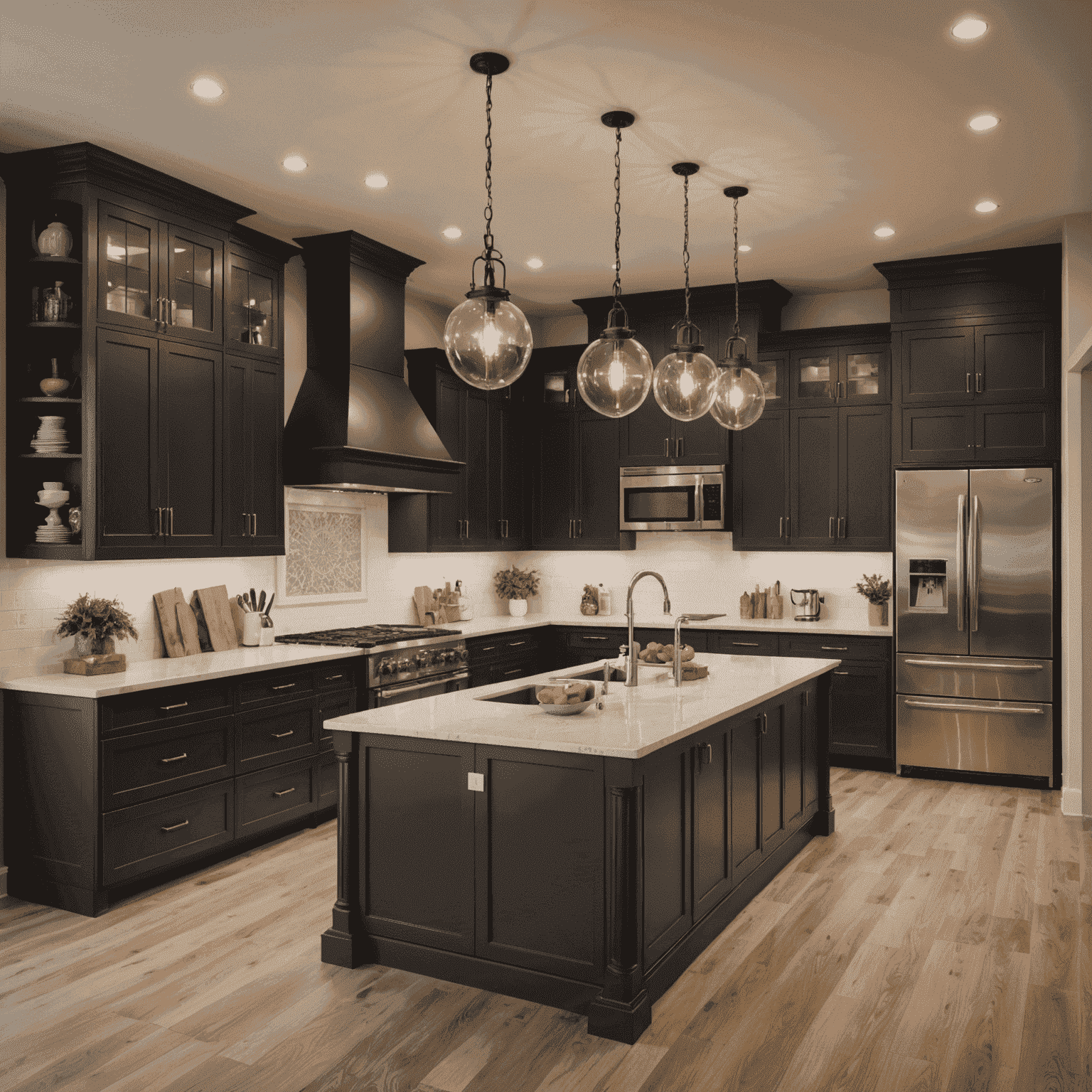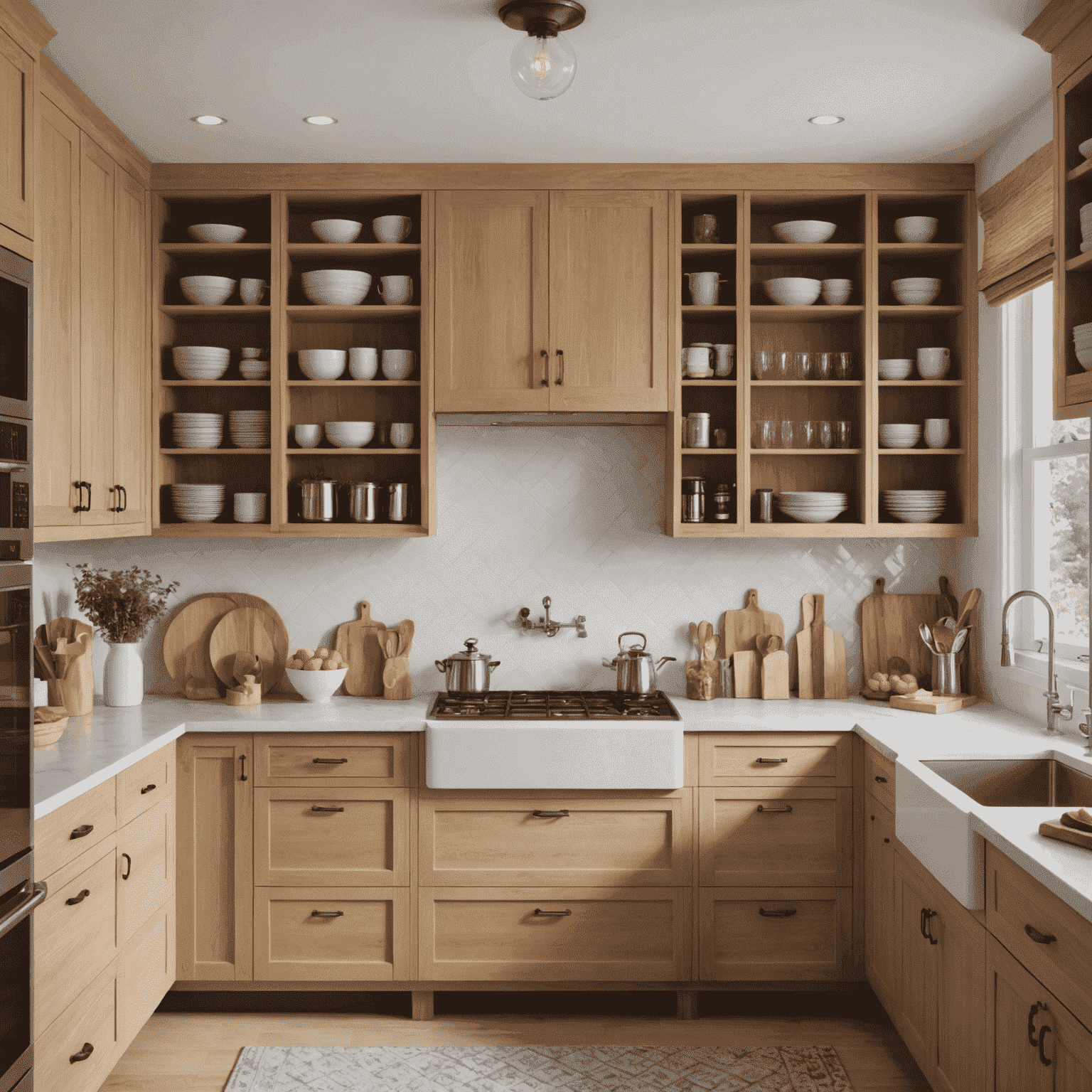Kitchen Design Aesthetics: Symmetry and Balance

Discover how incorporating symmetry and balance in your kitchen layout and decor can transform your cooking space into a harmonious culinary haven. By applying these design principles, you can create a kitchen that's not only functional but also visually striking and emotionally satisfying.
The Power of Symmetry in Kitchen Design
Symmetry is a fundamental principle in design that creates a sense of order and balance. In kitchen design, symmetry can be achieved through various elements:
- Matching upper and lower cabinets on opposite walls
- Centering the range or sink between two equal sections of countertop
- Placing identical pendant lights at equal distances above an island
- Using pairs of bar stools, plants, or decorative items

Balancing Colors and Textures
Achieving balance in your kitchen goes beyond layout. Consider these tips for color and texture harmony:
- Use a consistent color palette throughout the space
- Balance bold colors with neutral tones
- Mix textures to add depth and interest (e.g., smooth countertops with textured backsplashes)
- Create visual weight balance by pairing light and dark elements
Symmetrical Storage Solutions
Incorporate symmetry into your storage design for both aesthetics and functionality:
- Install matching pantry cabinets on either side of a refrigerator
- Use identical open shelving units flanking a window
- Arrange cookbooks and decorative items in symmetrical displays
- Choose drawer pulls and handles that complement the overall symmetry

Lighting for Balance and Ambiance
Proper lighting is crucial for creating a balanced and inviting kitchen atmosphere:
- Install symmetrical overhead lighting fixtures
- Use under-cabinet lighting to evenly illuminate work surfaces
- Place matching sconces on either side of a window or artwork
- Consider dimmable lights to adjust the ambiance as needed
Incorporating Asymmetry for Interest
While symmetry is important, a touch of asymmetry can add visual interest and prevent the space from feeling too rigid:
- Use an asymmetrical backsplash pattern as a focal point
- Incorporate a unique, statement light fixture over an island
- Display an eclectic collection of cookware or serving dishes
- Add a pop of unexpected color through accessories or artwork

Conclusion: Crafting Your Harmonious Kitchen
By thoughtfully incorporating symmetry and balance in your kitchen design, you can create a space that's not only visually appealing but also promotes a sense of calm and order. Remember, the key is to find the right balance between symmetrical elements and unique touches that reflect your personal style. With these principles in mind, you'll be well on your way to designing a kitchen that's both beautiful and functional – a true heart of the home where culinary creativity can flourish.